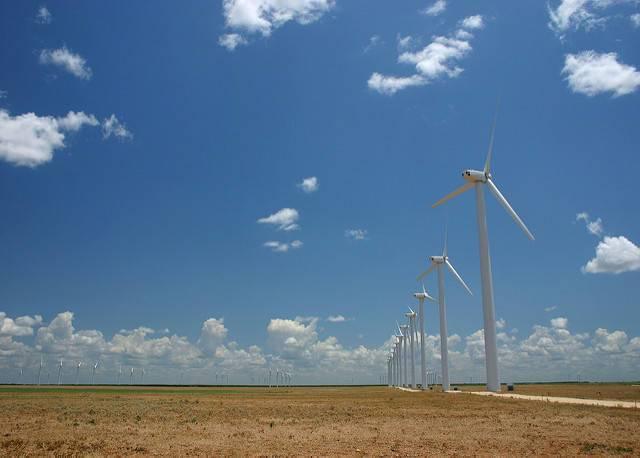
Among the companies jumping on the RE100 bandwagon is Nike, which two years ago made a pledge to run 100 percent on renewables by 2025. Recently the footwear and athletic apparel company has announced it has completed a huge step in coming closer to that goal since it joined the RE100 coalition in 2015.
The global initiative, a partnership between CDP and The Climate Group, counts on companies as diverse as Ikea, Coca-Cola, GM and Salesforce to boost demand for renewables worldwide. The four-year-old program is built on the premise that as the private sector consumes half of the world’s electricity generated worldwide, more cooperation is needed to remove barriers to harnessing clean energy technologies in order to reduce dependence on fossil fuels and decrease climate change risks.
Nike’s latest agreement is yet another wind power contract with Portland-based Avangrid Renewables. The company says the power purchase agreement (PPA), which will be sourced from a soon-to-be-built wind farm in Texas, will provide the equivalent of more than 400,000 average-sized American homes with safe and secure clean power. Nike also claims that the contract will result in carbon emission reductions equal to approximately 800,000 vehicles taken off the road during the life of the contract with Avangrid.
This latest contract builds upon the company’s first agreement with Avangrid signed during summer 2016, which provides 100 percent renewable power to the company’s Beaverton, OR headquarters along with other buildings the company occupies across Oregon. Together, Nike says these two PPAs has helped the company achieve over 50 percent of its RE100 goals while ensuring that all of its operations across North America run entirely on renewables.
In total, Nike says it will generate 5,000 gigawatts of power under the terms of the agreements made with Avangrid. While the company says it does not have any specific numbers at this time, it expects this recent PPA to serve as a revenue generator for Nike.
Nike claims it is the first company in this space to make such a large commitment to purchase renewables. “This matters to us because it’s a path critical to our business, the planet, and the future of sport and all athletes,” said Cyrus Wadia, Vice President, Sustainable Business & Innovation of Nike, during an interview last week with TriplePundit.
Wadia explained that deals like this are critical to Nike protecting its business for the long term, as the company has already seen evidence that pollution and climate change are already starting to have an impact on athletics. After all, climate change can wreak havoc on athletics worldwide, from calls to cancel a half-marathon in India last autumn due to air pollution, from the threats that a warming planet could pose to winter sports.
“In sport, we have got to get out in front of this issue,” said Wadia. “Because the impacts will be felt in some places sooner than others worldwide, and we want to be part of the solution.”
For years, Nike has been a trendsetter when it comes to sustainability within the apparel sector, notably with its constant experimentation with recycled materials such as leather. Now, the focus has been shifting to renewables and energy efficiency. A distribution center in Belgium, for example, has run 100 percent on clean power while incorporating a bevy of green building features. The company has also participated in the Department of Energy’s Better Building Challenge in a drive to reduce the energy intensity of its buildings by 20 percent.
These wind power contracts, however, comprise the most ambitious clean technology project Nike has launched this decade.
“We’re committed to this RE100 challenge, and we’re proud that we’re already 50% of the way there,” said Wadia as he concluded his interview with 3p. “All of North America is covered, and as we’re on our way, we hope these ripple effects have impact across our industry and beyond.”
Image credit: Flickr/FieldsBH

Leon Kaye has written for 3p since 2010 and become executive editor in 2018. His previous work includes writing for the Guardian as well as other online and print publications. In addition, he's worked in sales executive roles within technology and financial research companies, as well as for a public relations firm, for which he consulted with one of the globe’s leading sustainability initiatives. Currently living in Central California, he’s traveled to 70-plus countries and has lived and worked in South Korea, the United Arab Emirates and Uruguay.
Leon’s an alum of Fresno State, the University of Maryland, Baltimore County and the University of Southern California's Marshall Business School. He enjoys traveling abroad as well as exploring California’s Central Coast and the Sierra Nevadas.














